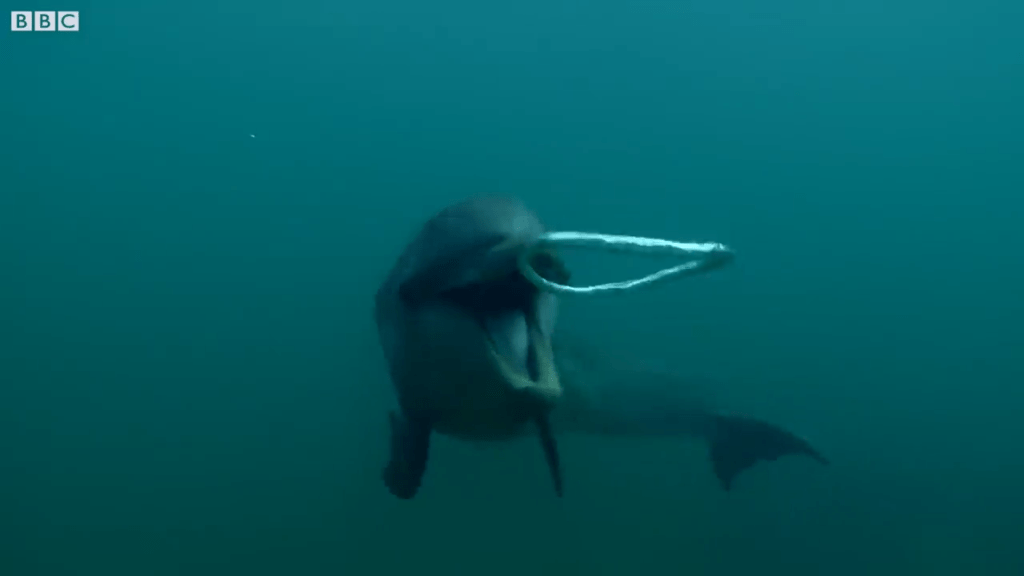Blow a jet of air underwater and you can make a bubble ring. It takes some practice for humans, or you can use a device. In this video, a team introduced wild dolphins to a bubble-ring-making machine and observed how the dolphins reacted. After some initial wariness, the animals played with them for hours, creating games and having fun. Note that there are some dolphins who create their own bubble rings to play with, so it’s hard to say that these particular dolphins have never seen a bubble ring before. But even if they have seen the bubbles, they wouldn’t have seen a machine making them. (Image and video credit: BBC Earth)
Tag: dolphins
Forming a Vortex
[original media no longer available]
Vortex rings show up remarkably often in nature. In addition to being the playthings of dolphins, whales, scuba divers, humans, and swimmers, vortex rings appear in volcanic outbursts and spore-spreading peat mosses. Vortex rings even occur in blood flow through the human left ventricle in the heart. In each of these cases, the vortex ring is formed by impulsively accelerating fluid through a narrow opening, like the dolphin’s blowhole. The fluid at the edge of injected jet is slowed by friction with the quiescent surrounding fluid. The fluid at the edge of the jet then slips around the sides and into the wake of the faster-moving fluid, where it’s accelerated through the middle of the forming vortex ring. This spinning from the inside-out and back-in persists as long as the vortex is intact, and is part of what keeps the ring from dissipating. (Video credit: SeaWorld; submitted by John C.)

Dolphin Bubble Rings
Dolphins create vortex rings to play with by exhaling through their blowholes. The sharp impulse of air, combined with the round shape, creates a vortex ring of bubbles. Humans can do this underwater, too, but dolphins aren’t content to lie at the bottom of the pool. Because smaller vortex rings are more coherent and last longer, they will break the growing vortex so that the vortex fragment rejoins as a smaller vortex ring. They also spin the water nearby to cause wave instabilities in the ring.

Water-Walking Basilisks
Some animals, like the common basilisk (a.k.a. the Jesus Christ lizard) are capable of running across water for short distances. The basilisk accomplishes this feat by slapping the water with sufficient force and speed to keep its body above the surface. This slap also creates a pocket of air around its foot. The lizard propels itself forward by kicking its leg back, then lifting its foot out of the water before the air bubble collapses. Water birds like the Western Grebe and tail-walking dolphins rely on similar physics to stay above the water line. # (submitted by Simon H)

Dolphins Making Bubble Rings
Marine animals know more about fluid dynamics than we might think. Dolphins make games out of blowing vortex rings (a.k.a. bubble rings) and tossing them around. You can try, too, next time you’re at the pool!



